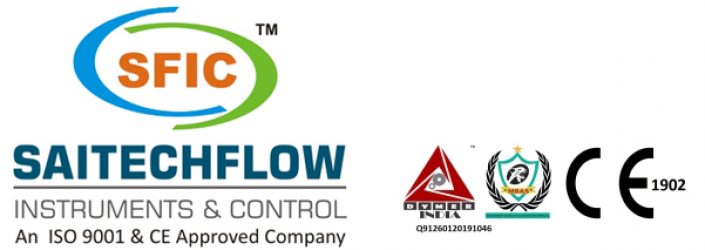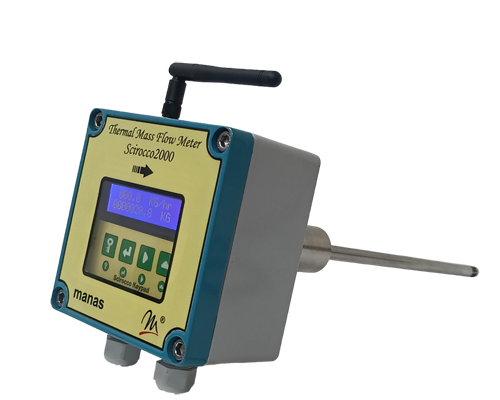Insertion Type Thermal Mass Flow Meter
Insertion Type Thermal Mass Flow Meters are used to measure the mass flow rate of gases, including air and steam, based on heat transfer principles. These meters are typically inserted directly into the pipe or duct, making them cost-effective for large pipe installations, especially in cases where inline meters would be too expensive or difficult to install.
Insertion thermal mass flow meters measure the mass flow of gases by using two sensors:
- Heated Sensor (Active): This sensor is heated to a temperature above the process gas temperature.
- Temperature Sensor (Reference): This sensor measures the actual gas temperature.
The heated sensor cools down as gas flows over it, and the rate of cooling is proportional to the mass flow rate of the gas. The heat loss is then measured, and the flow rate is calculated based on this heat loss and the temperature difference between the heated and reference sensors.
Key Features of Insertion Type Thermal Mass Flow Meters
-
Direct Mass Flow Measurement:
- Thermal mass flow meters measure the mass flow of gases directly, without the need for additional temperature and pressure compensation, which is especially useful for gas flow measurement (air, steam, natural gas, etc.).
-
Wide Range of Applications:
- They are well-suited for measuring gas flow in large ducts or pipes in industries such as HVAC, energy management, process control, and environmental monitoring.
-
Low Pressure Drop:
- Because the insertion probe only occupies a small portion of the pipe’s cross-sectional area, these meters create minimal resistance to the flow, resulting in very low pressure loss.
-
Cost-Effective for Large Pipe Sizes:
- Insertion flow meters are much more cost-effective than full-bore (inline) flow meters, especially for large pipe sizes, where full-bore installations can be complex and expensive.
-
No Moving Parts:
- The absence of moving parts reduces maintenance and makes the meters highly durable and reliable, particularly in harsh environments or applications with potential contamination.
-
Energy Efficiency Monitoring:
- These meters are often used in applications where monitoring energy consumption is essential, such as in compressed air systems or steam distribution.

